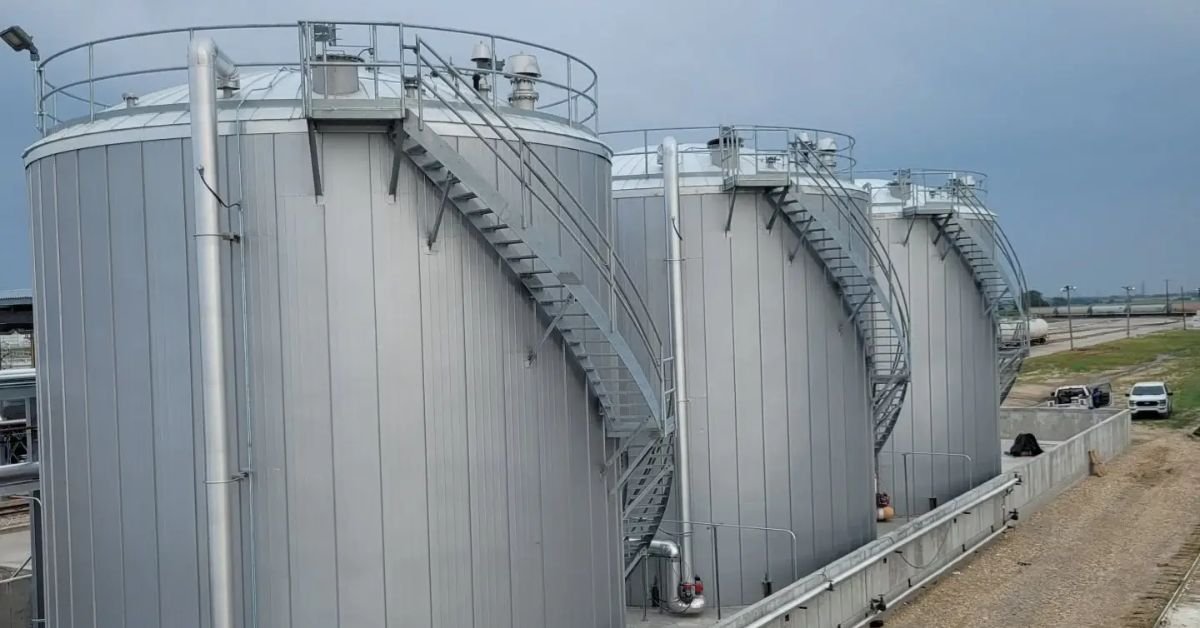Structural Design Essentials for Thermal Energy Tanks
Regions looking to reduce energy costs while establishing reliable infrastructure can benefit from installing thermal energy storage (TES) tanks. These tanks can lower municipal energy expenses and offer backup cooling capabilities for critical facilities in the area. Areas around the country can benefit from these specialized storage systems and their diverse applications. TES tanks can improve schools, hospitals, government buildings, data centers, and more.
However, installing these fixtures requires understanding the structural design essentials for thermal energy tanks. Proper design, material choice, and installation allow these tanks to operate more efficiently. This saves communities money on maintenance and repairs and ensures compliance with safety and performance standards. The Pittsburg Tank & Tower Group is here to explain these essentials so we can build a better community.
Understanding Thermal Energy Storage Tank Fundamentals
Thermal energy storage tanks function as reservoirs that store chilled water for district cooling systems. They typically have a cylindrical or rectangular structure and can hold over 35,000 gallons of water. Larger areas may have tanks that can hold over a million, depending on the area or facility’s cooling demands. These tanks aim to store cooling energy during off-peak hours when electricity rates are lower and release the stored cooling capacity during peak demand periods.
Thermal energy storage tanks operate on thermal stratification that naturally separates warm and cold water based on the subtle differences in their density. Warm water rises to the top, which creates a specialized temperature layer to maintain system efficiency. This natural phenomenon allows the tanks to function effectively without complex mechanical mixing systems.
Critical Load-Bearing Requirements
Engineers and technicians developing a thermal energy storage tank must account for multiple load scenarios when designing these tanks. The first thing to keep in mind is the water weight, as tanks must withstand up to several million pounds in larger installations. The foundation must distribute the weight evenly to maintain stable conditions and prevent potential settlements that could compromise the tank’s integrity.
Technicians should also account for wind, especially with above-ground or elevated installations. Tank walls and roofing systems need proper reinforcement to withstand local wind conditions without structural failure. Certain regions may also need to account for fault lines and seismic activity that could affect the tank. In these scenarios, technicians create specialized anchoring systems to keep the structure in place.
Cold regions that experience heavy snowfall may require additional load-bearing precautions, such as sloped roofs, to prevent snow accumulation. These combined loading conditions demand careful analysis to ensure the tank structure remains safe throughout its operational life.
Foundation Design Considerations
Considerable engineering goes into a thermal energy tank’s foundation to ensure it can handle substantial water loads. Many cylindrical tanks use ring foundations to distribute the load around the perimeter of the tank, allowing for thermal expansion and contraction cycles.
It’s important to make sure the soil conditions at the installation site can accommodate the foundation by conducting a geotechnical investigation. These reports can reveal bearing capacity, settlement characteristics, and groundwater conditions that affect foundation performance. Poor soil conditions may necessitate deep foundations or ground improvement techniques to achieve adequate support.
All water storage tank areas should have proper draining systems around the foundation to prevent water accumulation around the tank. Improper draining can result in soil erosion or frost heaving in colder climates. Certain areas may need to install foundation insulation to prevent heat loss through the bottom of the tank.
Material Selection for Optimal Performance
One of the most important structural design essentials for thermal energy tanks is investing in the right materials. Steel is the most common choice for these tanks for its durability, cost-effectiveness, and strength. Carbon steel provides excellent structural properties at a reasonable cost, while stainless-steel components resist corrosion in aggressive water conditions. Welded steel construction allows for custom sizing and shapes to meet unique site requirements.
It’s also important to choose the right material for the coating systems to protect steel surfaces from rust, corrosion, or other issues and extend the tank’s lifespan. Interior coatings must withstand constant water and temperature exposure without degrading or contaminating the water. Exterior coatings protect the tank from changing weather conditions and offer reflective properties to prevent damage from the sun.
Insulation and Energy Efficiency Specifications
Thermal insulation minimizes energy losses that could reduce the efficiency of the tank and lead to higher operating costs. The thickness of the insulation may depend on the tank size, climate conditions, energy costs, and desired performance levels. Installing proper insulation can reduce thermal losses dramatically compared to uninsulated tanks.
The two main types of insulation are external and internal. External insulation must protect the tank from weather and other external conditions. Metal cladding systems provide durable protection while allowing for thermal expansion of the underlying insulation. Proper sealing prevents air infiltration that could cause convective heat losses.
Internal insulation is a useful option in places where installing external insulation is less feasible. These systems must resist water damage while maintaining thermal properties over extended periods. Proper installation prevents thermal bridging that could compromise overall system efficiency.
Safety and Code Compliance Standards
Thermal energy storage tanks must adhere to the area’s building codes and safety standards. Local building officials require compliance with applicable codes, including structural, plumbing, and electrical requirements. Professional engineers must seal design documents to verify code compliance and structural adequacy.
Make sure all pressure vessels apply to the tank configurations and undergo inspection. Thermal tanks require relief systems to prevent over-pressurization that could result in structural failures or safety concerns. Emergency overflow systems handle excess water volume during system malfunctions.
Site Integration and Space Planning
Thermal energy storage tanks require careful site planning to optimize performance while meeting aesthetic and functional requirements. Above-ground storage tanks are easier to access but require more architectural consideration. Below-ground installations minimize visual impact but increase excavation and waterproofing costs.
All storage tanks should provide clear maintenance access and emergency response options. Thermal tanks need piping connections and space to perform maintenance or replacements on them. The electrical and control systems of the tank should be accessible and protected from weather exposure.
Maximizing Your Investment in Thermal Energy Infrastructure
Thermal energy storage tanks represent a significant investment in sustainable infrastructure that can provide decades of reliable service when properly designed and constructed. Local governments that prioritize comprehensive structural design considerations ensure these systems deliver maximum energy savings while maintaining operational reliability.
For dependable solutions and expert guidance, trust Pittsburg Tank & Tower Group as your go-to tank and tower contractors. Contact our team today to discuss your project needs and learn how we can deliver innovative and reliable results tailored to your requirements.
Copyright © 2024 Pittsburg Tank & Tower Group. All Rights Reserved
















